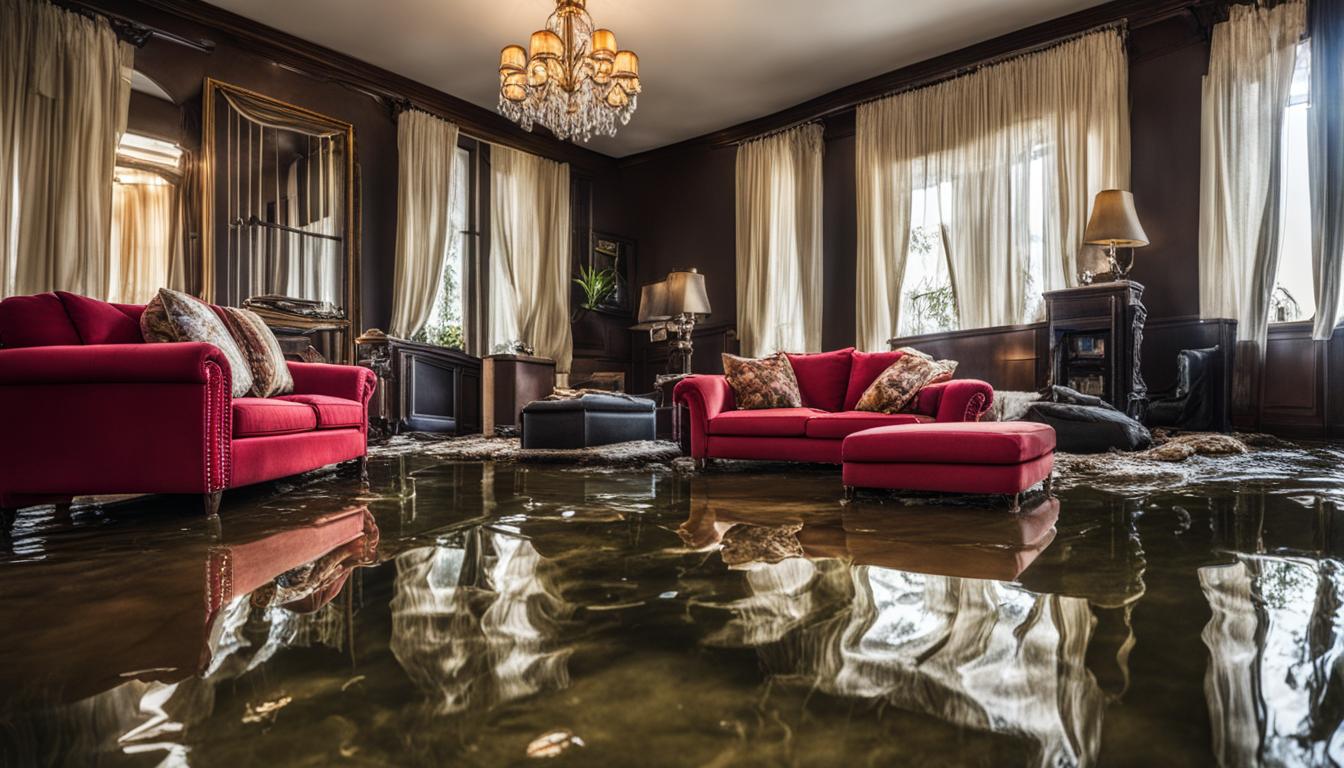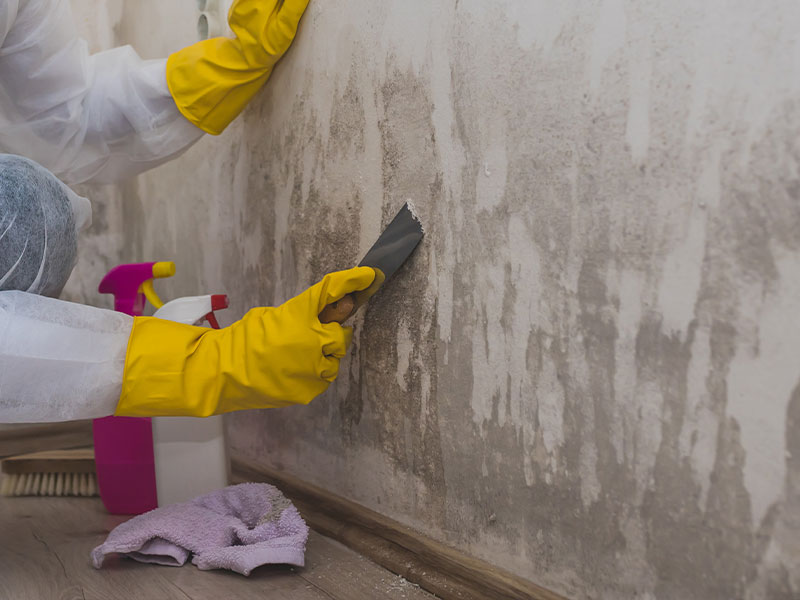Did you know that just one inch of rain can release over 600 gallons of water into a home’s foundation within minutes? This fact shows how important it is to know how water affects foundation stability. Too much moisture, from rain or high water tables, can weaken a building’s structure. But how long does it take for water to damage a foundation?
The answer varies. Several things, like soil type, building materials, and weather, affect the damage. Looking into these factors, we see that water damage can happen fast, in months, or slowly, in years.
Key Takeaways
- Just one inch of rain can deposit over 600 gallons of water around a home’s foundation.
- Water exposure from seasonal changes and consistent moisture poses significant risks to foundation stability.
- The deterioration timeline of a foundation due to water depends on variables like soil type, construction materials, and climate.
- Understanding these factors can help homeowners take proactive measures to protect their foundations.
- In some cases, foundation damage can occur within months, while in others, it may take years.
Understanding Foundation Damage from Water
Foundations are key to keeping buildings stable. Yet, foundation damage from water is a big problem. Water gets into concrete foundations because they are porous, causing many issues.
Concrete is strong but has tiny pores. Water going through these pores weakens the concrete. This weakening can make the foundation crack and weaken its structure.
Another issue is the expansion and contraction of soil. Water makes the soil around the foundation expand and contract. This cycle stresses the foundation, causing more cracks and instability. Water can also wash away soil, making the foundation settle unevenly and leading to serious problems.
It’s important for property owners to understand water damage to foundation. Spotting early signs like small cracks or damp spots in the basement is key. Being proactive in dealing with water issues can prevent long-term damage and keep the structure strong.
How long does it take for water to ruin a foundation?
Knowing the foundation water damage timeline is key for homeowners. Water starts to seep in with tiny cracks, often unnoticed. These small openings can appear after heavy rain or plumbing problems.
As water keeps getting in, these cracks grow bigger. Within one to two weeks, you might see walls warp, structures lean, and floors become uneven. This is a sign that your foundation’s strength is at risk and needs quick action.
In extreme cases, big problems can happen fast. In just 72 hours, your foundation could shift or even fail. So, spotting early signs and knowing the foundation water damage timeline is vital for quick fixes.
The table below shows how foundation water damage gets worse over time:
| Time Frame | Signs of Damage | Consequences |
|---|---|---|
| 0-3 Days | Initial moisture intrusion | Potential for small, hairline cracks |
| 3-7 Days | Expansion of existing cracks | Increased moisture, minor warping of walls |
| 1-2 Weeks | Noticeable warping or leaning of structures | Development of uneven floors, possible structural compromise |
| 2-3 Weeks | Major structural shifts | Significant foundation issues, risk of catastrophic failure |
| 3+ Weeks | Severe, widespread damage | Complete structural failure possible |
Staying alert to the foundation water damage timeline and catching damage early can save you from expensive fixes. It also helps keep your home’s foundation strong for years to come.
Preventing Water Damage to Your Foundation
Protecting your home from water damage starts with proactive steps. Using effective waterproofing techniques is key. Cleaning gutters regularly helps keep water away from your foundation.
Proper landscaping also plays a big role. It directs water away from your home’s base. This helps prevent water from getting into your foundation.
Don’t wait to seek professional help if you notice any foundation issues. Companies like Emergency Restoration Services offer expert advice and quick solutions. Their knowledge in foundation waterproofing is essential for keeping your home safe.
In short, using waterproofing techniques and regular maintenance can greatly lower the risk of water damage. Taking steps to prevent water damage ensures your home stays strong and stable. This gives you peace of mind.
Conclusion
Fixing water seepage in foundations is key to keeping buildings safe and lasting. This article showed why water can harm foundations, how fast it can happen, and how to stop it. Knowing these things helps homeowners protect their homes.
Spotting water seepage early and fixing it can save a lot of money and trouble. Water can cause big problems if not fixed quickly. So, it’s important to check foundations often and keep them in good shape.
To keep a home’s foundation strong, understand the dangers of water seepage. Work to avoid these dangers. By using preventive steps and watching for signs, homeowners can keep their homes safe and stable for a long time. Being careful and taking action early is the best way to fight water damage to foundations.



























